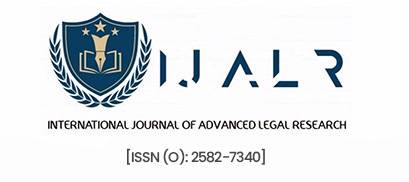Abstract:
The law of excluding and admitting evidence of the conduct of the parties has long been regarded as overly complex across the common law world. The Tendency rule and the Coincidence rule are not exceptions of it. Those rules deal with the tendency of the accused person to do certain acts based on the assertion that they have done it before, or, done the similar acts in two or more events coincidentally. This article will provide a closer examination of those two rules of the evidence law and will discuss about the recognition of those two rules in the legal system of Bangladesh.
Keywords: Evidence Law, Behavioural Evidence,Coincidence Rule, Tendency Rule.
- Introduction:
Tendency and coincidence evidence, also known as propensity or similar fact evidence, indicates that an accused has a propensity to engage in specific acts, grounded in the premise that they have previously committed such acts or that the similarity of multiple allegations suggests a likelihood of their involvement in several offences.[1]If it is established that an individual possesses a specific propensity or that the actions of the accused are sufficiently similar to be deemed non-coincidental, this constitutes further circumstantial evidence that the court may use to infer the accused’s commission of the alleged offences. Moreover, this form of evidence may be utilised by a court to evaluate the reliability of witnesses, contingent upon the acceptance of the propensity evidence.[2] This type of rules can be seen expressly in the Evidence Act of Australia. Bangladeshi evidence law hasn’t directly adopted those two rules, but the implication of those rules is here impliedly.
- Historical Background of Tendency and Coincidence Evidence
The propensity and coincidence rules originated from the common law principle of rejecting similar fact evidence in order to protect accused individuals from unjust prejudice. The rule was developed in landmark cases such as Boardman (1975), which required “striking similarity” in order for exclusion to be considered an “affront to common sense,”[3] and Makin (1894), which permitted similar fact evidence only if it was relevant beyond demonstrating propensity.[4] William III’s 1695 treason trial statute served as its foundation, and early commentators like Sir James Stephen had an impact. As demonstrated by cases like Markby (1978)[5], Perry (1982)[6], Hoch (1988)[7], and Pfennig (1995)[8], there must be a significant amount of probative force in Australia. Evidence should only be presented when guilt is the only reasonable explanation. This strict approach was loosened by the Evidence Act 1995 (NSW and Cth)’s legislative tendency (S.97) and coincidence (S.98) regulations, which stipulate that there must only be substantial probative value and that it must greatly outweigh any negative effect (S.101(2)). Thanks to the current framework’s relaxation of previous protections, such evidence can now be admitted with greater ease than it could during the stricter common law era.
- Meaning and Definition:
The general term for tendency evidence and coincidence evidence is “propensity” evidence. This type of evidence is typically presented to demonstrate that an accused has committed other past acts, whether charged or uncharged, of a similar nature, or to contextualise the evidence. Part 3.6 (Sections 94 to 101) of the Australian Evidence Act 1995 addresses these categories of evidence.[9]
Tendency Rule:‘Tendency Evidence’ is defined in the Dictionary to the Australian Evidence Act, 1995, which says, “Tendency evidence means evidence of a kind referred to in subsection 97(1) that a party seeks to have adduced for the purpose referred to in that subsection.”[10] And this term ‘Tendency Rule’ is defined as, “tendency rule means subsection 97(1).”[11]This signifies The concept of tendency evidence, or tendency rule, is outlined in Section 97(1) of the Australian Evidence Act.
This section stipulates that such evidence is admissible if the party intending to present it provides reasonable written notice to all other parties and the court determines that the evidence possesses significant probative value, either independently or in alongside other evidence presented or to be presented by the party seeking to submit it. This principle is referred to as the ‘Tendency Rule’.[12] This rule is called ‘Tendency Rule’.
Tendency evidence is tendered to prove (by inference) that, because, on a particular occasion, a person acted in a particular way (or had a particular state of mind), that person, on an occasion relevant to the proceeding, acted in that particular way (or had that particular state of mind).[13]In a case where tendency evidence involving multiple complainants is proposed to be adduced, the evidence will be inadmissible if there is any ‘reasonable possibility’ that there has been concoction, collusion or contamination among the complainants.[14]
Coincidence Rule:The term ‘Coincidence Evidence’ is defined in the Dictionary to the Australian Evidence Act, 1995, which says, “coincidence evidence means evidence of a kind referred to in subsection 98(1) that a party seeks to have adduced for the purpose referred to in that subsection.”[15] And the term ‘Coincidence Rule’ is defined as, “coincidence rule means subsection 98(1).”[16] That means coincidence evidence or coincidence rule is that defined at the S. 98(1) of the Australian Evidence Act.
Under section 98(1) of the Australian Evidence Act, coincidence evidence is defined as evidence that demonstrates the occurrence of two or more events in which an individual performed a specific act or possessed a certain state of mind. This is based on the premise that, considering any similarities in the events or the contexts in which they took place, or in both the events and their circumstances, it is unlikely that these events happened by coincidence.
There exist two kind of coincidence evidence. The first scenario involves two or more incidents occurring under circumstances where the conduct is uncertain. The resemblance of the incidents suggests that it is improbable they happened accidently or unexpectedly, indicating they were, in reality, the outcome of illegal activities. The second kind of coincidence evidence pertains to instances where several analogous claims arise under circumstances that render it improbable for two or more complainants to have independently fabricated comparable accusations against the same offender. The resemblance of the claims suggests that the witnesses are truthful.
Evidence of coincidence will be deemed inadmissible if there exists a substantial likelihood of fabrication or cooperation among the complainants.[17]
[1]Fernanda Dahlstrom, ‘Tendency and Coincidence’ (GoToCourt.Com, 1April 2019) <https://www.gotocourt.com.au/criminal-law/vic/tendency-and-coincidence>
[2]Geoff Harrison, ‘Tendency & Coincidence’ (Geoff Harrison Criminal Barrister, 8 October 2023) <https://www.geoffharrison.com.au/post/tendency-coincidence>
[3]Director of Public Prosecutions v Boardman [1975] AC 421.
[4]Makin v Attorney-General for New South Wales [1894] AC 57.
[5]Markby v The Queen [1978] 140 CLR 108.
[6]Perry v The Queen [1982] 150 CLR 580.
[7]Hoch v The Queen [1988] 165 CLR 292.
[8]Pfennig v The Queen [1995] 182 CLR 461.
[9]Australian Law Reform Commission, Family Violence – A National Legal Response (ALRC Report 114, 2010) para 27.170.
[10]Australian Evidence Act 1995, Dictionary.
[11]Ibid.
[12]Australian Evidence Act 1995, s 97 (1) (b).
[13]Gardiner v R [2006] 162 A Crim R 233; R v Cittadini [2008] 189 A Crim R 492.
[14]Dahlstrom (n 3).
[15]n 12.
[16]Ibid.
[17]Dahlstrom (n 3).

